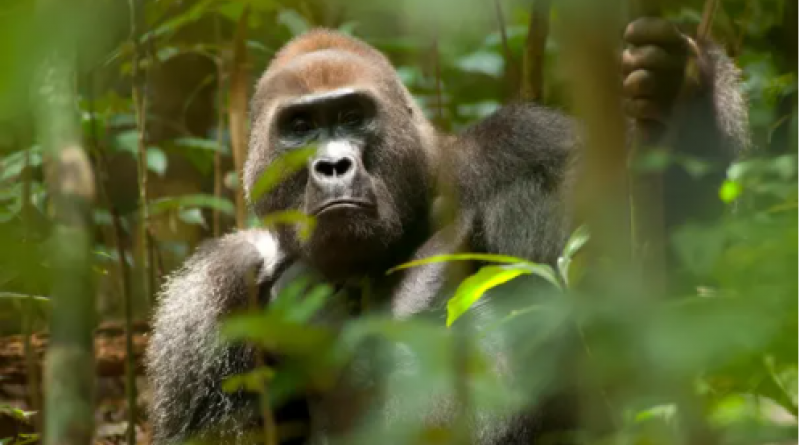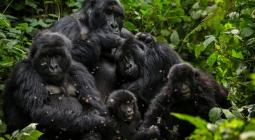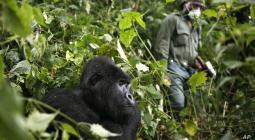Great apes predicted to lose 90% of homelands in Africa, study finds.

Global heating and habitat destruction may together devastate humanity’s closest relatives.
Great apes – humanity’s closest relatives, are predicted to lose a “devastating” 90% of their homelands in Africa in coming decades, according to a study.
All gorillas, chimpanzees and bonobos are already endangered or critically endangered. But a combination of the climate crisis, the destruction of wild areas for minerals, timber and food, and human population growth is on track to decimate their ranges by 2050, the scientists said. Half of the projected lost territory will be in national parks and other protected areas.
Some new areas will become climatically suitable for the apes, but the researchers doubt they will be able to migrate into these regions in time. The estimated range loss is stark, but today’s ranges in central and western Africa are already much smaller than in the past.
“It’s a perfect storm for many of our closest genetic relatives, many of which are flagship species for conservation efforts within Africa and worldwide,” said Joana Carvalho, a biologist and computer modeller at Liverpool John Moores University in the UK and who led the study. “If we add climate change to the current causes of territory loss, the picture looks devastating.”
The analysis used data from the International Union for Conservation of Nature’s apes database on species populations, threats and conservation action at hundreds of sites over 20 years. It then modelled the combined future impacts of global heating, habitat destruction and human population growth.
There are uncertainties in the data and model results, said Carvalho: “But there is going to be change and not for the best. Even the ranges we see at the moment are much smaller than they have been.”
Most great ape species prefer lowland habitats, but the climate crisis will make some lowlands hotter, drier and much less suitable. Uplands will become more attractive, assuming the apes can get there, but where there is no high ground, the apes will be left with nowhere to go.
“As climate change forces the different types of vegetation to essentially shift uphill, it means that all animals – not only great apes – that depend on particular habitat types will be forced to move uphill or become locally extinct,” said Fiona Maisels, at the Wildlife Conservation Society and part of the research team. “But when the hills are low, many species will not be able to go higher than the land allows, and huge numbers of animals and plants will simply vanish.”
The research, published in the journal Diversity and Distributions, was conducted by scientists from almost 50 universities, research institutes and conservation organisations. It analysed two scenarios, one where action is taken to curb the climate risis, habitat loss and human population growth, and one where little is done.
But the researchers found relatively little difference in the projected range losses, with 85% loss in 2050 in the first scenario and 94% in the second. “What is predicted is really bad,” said Carvalho.
Some new areas will become suitable for the great apes as the climate changes, but the animals are poor at migrating compared with many species because they reproduce slowly and have low population densities and specific diets. “The timeframe of 30 years [until 2050] is not enough,” Carvalho said.
Nonetheless, some migration could occur and a key action to avert some range losses is ensuring connectivity between the places where apes live, she said, by creating new protected areas. There is good conservation work being done in some places the scientists said with, for example, Gabon’s development of farming, mining and road and rail links being focused on areas that are already degraded, avoiding intact forests.
However, the biggest protection for great apes could come from consumers in rich nations demanding sustainably produced goods. Currently the export of minerals for mobile phones, timber, and palm oil are major drivers of great ape population falls.
“There must be global responsibility for stopping the decline of great apes,” said Hjalmar Kühl, from the German Centre for Integrative Biodiversity Research in Leipzig. “All nations benefiting from these resources have a responsibility to ensure a better future for great apes, their habitats and the people living there.”
7 June 2021
The Guardian




